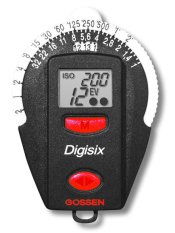In my book, it should be simple/quick, have a analog scale, have mechanical controls for changing EI, etc., and be extremely durable.
I personally do not like multimeters because none of the ones I have seen meet any of these requirements in my eyes. I like to have separate incident, spot, and flash meters. They seem to be more specialized, more simple/quick, more well built, and seem to be available with analog scales and the ability to make setting mechanically (i.e. twisting a dial until a number lines up with a dash, instead of pushing a button and rolling a wheel until a number comes up on an LCD).
Digital readouts on an ambient light meter make no sense to me whatsoever. I find them most unhelpful. I see it as a complete waste and unnecessary application of technology to something that was already just as good as it could ever get. It does nothing but get in my way. (I do put up with the red dots inside my Pentax Digital Spot Meter, though.)
I have not found a flash meter that feels like it fits the "durable" description, and I don't mind a digital readout on a flash meter, as it is not a hindrance when using flash. For as little as I use flash, I usually borrow a flash meter, though I am probably going to end up getting a Minolta soon. I like a brick that has nothing but an EI dial, a PC port, and a button. That also probably means that it is less likely to break, and that when I do break it, I can either fix it myself or be able to easily get quality work done on it for a reasonable price.
For me, they have to be durable, because they tend to get beat to hell in actual "field" use, the way I use them.
My incident is what I use probably 3/4 of the time that I use a light meter.
I have a Brockway, which is an early version of the Sekonic L-398, which is still made.
It has survived a lot just since I obtained it, and it still reads perfectly at almost 60 years old.
Based on my own experience, I would suggest a Sekonic Studio L-398 from Freestyle. They are under $200. They are best bargain out there in a light meter, as far as I am concerned...and not only are they the best bargain, but the best bargain in this case also happens to be for the "best" meter, IMO. You will never need another incident ambient meter if you get this thing (and do not destroy it).
There is also a cheaper Sekonic caried by Freestyle that probably works just as well. It is about $100. (See Ektagraphic's post below.)
You can get a worthwhile student discount on both of these meters if you are a full timer. The L-398 goes down to below $150 this way. You can apply through Mac Group, which is the distributor, I believe. Once you are signed up, you also get the discount on Toyo, Mamiya, ProFoto, and some other stuff.





